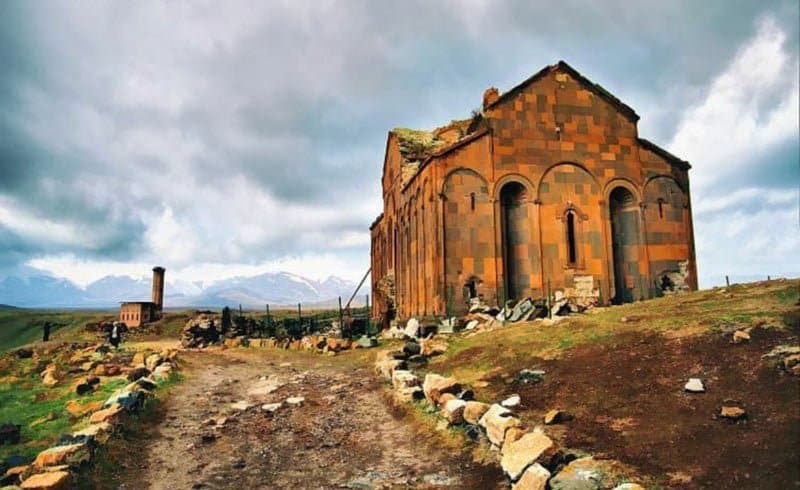Ani Ruins, Kars

Ani Ruins is one of the most beautiful sights of Kars, with falling snow crystals, the beauty of the scenery, legendary food and many more. Maybe a little forgotten and therefore a little offended, but you should still take the time to see it!
So Why Are Ani Ruins So Important?
Located in one of the easternmost points of Turkey, near Lake Çıldır, on the border with Armenia, these ruined structures are the memories of a city where 100,000 people lived in the 10th century. The first Turkish mosque built in Anatolia is among these ruins. The ancient city is currently on the UNESCO World Heritage Tentative List. Excavation and restoration work has been carried out since 2011 in the city, which deserves to be included in the permanent list.

History of Ani Ruins
Although the city is described as a souvenir from the 10th century, the real history of the ancient city dates back to BC. It dates back to the 3000s. The city of Ani, which is one of the most colorful stops that comes to mind when the Silk Road is mentioned, is also known as the place where the heart of trade beat at that time. In fact, it is such an important center that the city is also referred to as the “City of 1001 Churches” in the history pages. Having lived its most glorious times during the Armenian Bagratuni Dynasty, Ani was discredited and forgotten during the 93 War. These lands, where dozens of civilizations such as Byzantines, Bargats, Georgians, Seljuks, Mongols, Karakoyunlu – Akkoyunlus and Ottomans came and passed, have remained within the borders of the Republic of Turkey since the 1920s.

What will you see in Ani Ruins?
In the city, where you will encounter exquisite works of Armenian, Georgian and Seljuk architecture, the first structures that will attract your attention are the walls, which are 5 kilometers long and have 7 gates. The walls, which were built for the first time in 964, then in 977 and finally in 1064, after the conquest of the city by the Seljuk Sultan Alpaslan, are still intact.
Churches: From the period when Armenians first accepted Christianity, Hz. The Tigran Honents Church, built in 1205 and featuring frescoes inspired by the life of Jesus, and the Young Girls and Nuns monasteries built in the 13th century are some of these churches. WOMAN. Abughamrents Church, whose history dates back to 980, is also known as the building that inspired Seljuk architecture. The oldest church in the ancient city is the Atesgede Temple, a Zoroastrian temple from the 4th century. Gagik Church and Keçeli Church, which were half destroyed due to lightning strike, are other churches worth seeing.

The oldest mosques in Anatolia, Ebu’l Manuçehr Mosque and Fethiye Mosque (Great Cathedral): Built before Sivas Divrigi Mosque, one of the oldest mosques in Anatolia, Ebu’l Manuçehr Mosque was built in 1072 during the Seljuk period. Fethiye Mosque, the work of the architect who was built as a church in 1010 and rebuilt the dome of Hagia Sophia, is the place where the first conquest prayer in Anatolia was performed.

Palaces: Of course, there are also palaces that reflect the grandeur of the big city. In fact, the stonework of the 3-storey and 2-storey Seljuk Palace and the 12th century caravanserai are worth seeing.
Apart from these structures, only the remains of a bridge by the river, the baths built during the Seljuk period and the caves dating to the Bronze Age are also part of the city.







